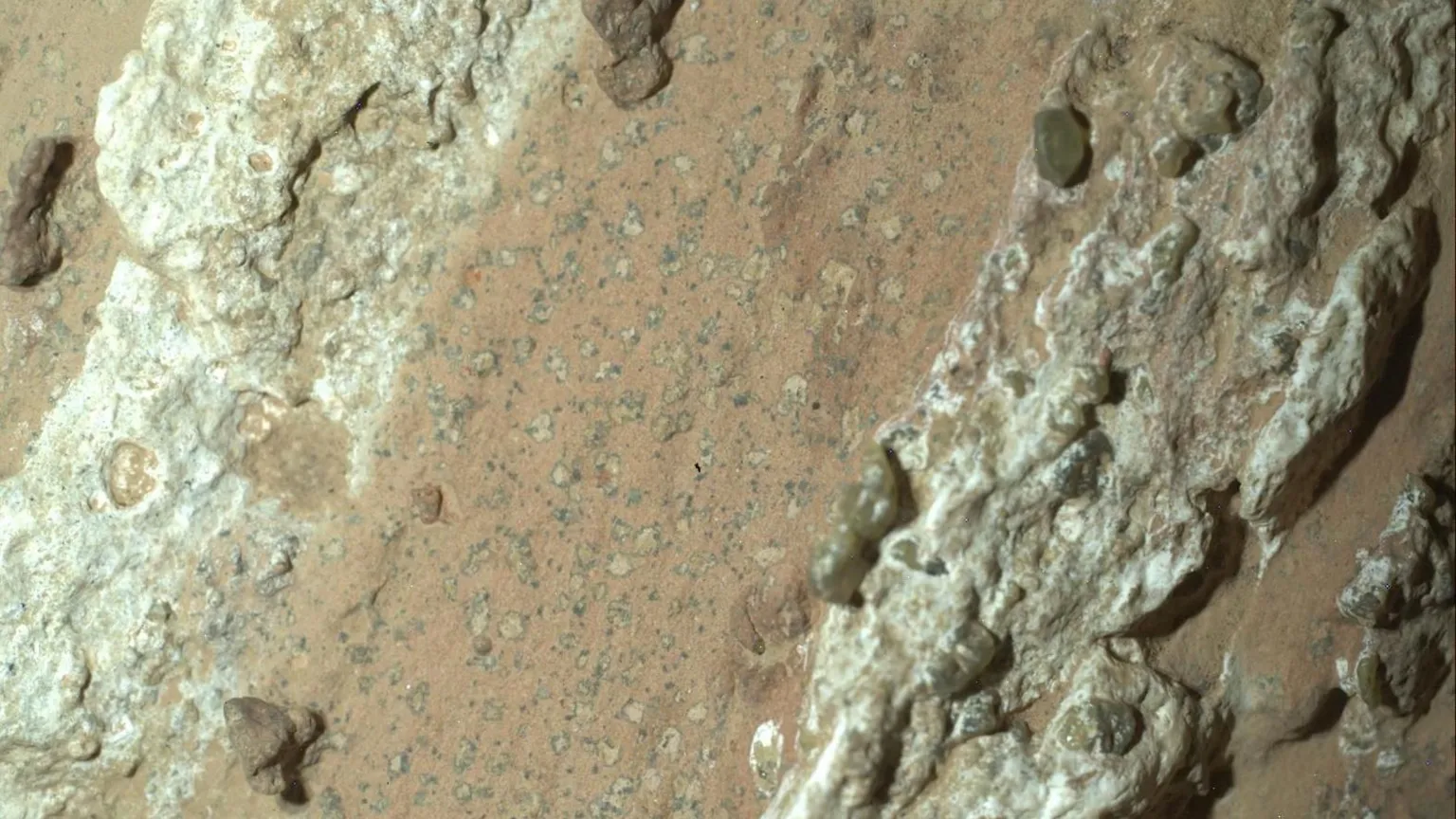Unusual rocks discovered on Mars contain the most tantalising evidence yet of potential past life on the Red Planet.
The mudstones, found in a dusty riverbed by Nasa’s Perseverance Rover, are dotted with intriguing markings nicknamed leopard spots and poppy seeds.
Scientists believe these features contain minerals produced by chemical reactions that could be associated with ancient Martian microbes.
It’s possible the minerals were produced by natural geological processes, but the findings are significant enough to meet Nasa’s criteria for what it calls “potential biosignatures”.
This means that they warrant further investigation to determine whether they are biological in origin.
“We’ve not had something like this before, so I think that’s the big deal,” said Prof Sanjeev Gupta, a planetary scientist from Imperial College London and one of the authors of a study which has been published in the journal Nature.
“We have found features in the rocks that if you saw them on Earth could be explained by biology – by microbial process. So we’re not saying that we found life, but we’re saying that it really gives us something to chase.”
“It’s like seeing a leftover fossil. Maybe it was a leftover meal, maybe that meal’s been excreted and that’s what we’re seeing here,” Dr. Nicola Fox, Nasa’s Associate Administrator for the Science Mission Directorate, said in a press conference on Wednesday.
The only way to fully confirm if the minerals were made by microbes would be to bring the rocks back to Earth for analysis .
A Mars sample return mission has been proposed by Nasa and Esa but its future looks highly uncertain. The US Space Agency’s science budget is facing huge cuts that have been put forward in President Trump’s 2026 budget and a sample return mission is one of those facing cancellation.
Today, Mars is a cold and arid desert. But billions of years ago there is evidence that it had a thick atmosphere and water, making it a promising place to look for past life.
The Perseverance Rover, which touched down on the Martian surface in 2021, was sent to search for signs of biology. It has spent the last four years exploring a region called the Jezero Crater, which was once an ancient lake with a river flowing into it.
The rover found the leopard print rocks last year at the bottom of a canyon carved out by the river in an area called the Bright Angel Formation. They are about 3.5bn years old and are a type of rock called mudstone, which is fine-grained rock formed from clays.
“We kind of immediately knew there was some interesting chemistry that had happened in these rocks so we were pretty excited right away,” said Joel Hurowitz from Stony Brook University in New York, who is also a Perseverance mission scientist and lead author of the paper.
The rover used several instruments in its onboard lab to analyse the minerals in the rocks. This data was then beamed back to Earth for scientists to study.
“We think what we’ve found is evidence for a set of chemical reactions that took place in the mud that was deposited at the bottom of a lake – and those chemical reactions seem to have taken place between the mud itself and organic matter – and those two ingredients reacted to form new minerals,” explained Dr Hurowitz.
In similar conditions on Earth, chemical reactions creating minerals are typically driven by microbes.
“That is one of the possible explanations for how these features came to be in these rocks,” said Dr Hurowitz. “This feels like the most compelling potential biosignature detection that we’ve had to date.”
The scientists have also examined how the minerals could have formed without microbes – and concluded that natural geological processes could also be behind the chemical reactions.
However they would require high temperatures, and the rocks don’t look like they’ve been heated.
“We found some difficulties for the non-biological pathways – but we can’t rule them out completely,” Dr Hurowitz said.
Perseverance has been collecting samples while it’s been exploring Mars – including the rocks found at the Bright Angel Formation. They have been stored in canisters, and will be deposited on the surface of Mars awaiting a mission that could return them.
Nasa’s plans for such an endeavour hang in the balance because of the threatened budget cuts, but China is also pursuing a sample return mission that could launch in 2028.
While the decision is debated, scientists are desperate to get their gloved hands on the rocks.
“We need to see these samples back on Earth,” said Prof Gupta.
“I think for true confidence, most scientists would want to see and examine these rocks on Earth – this is one of our high priority samples to return.”
Sourse: BBC







































